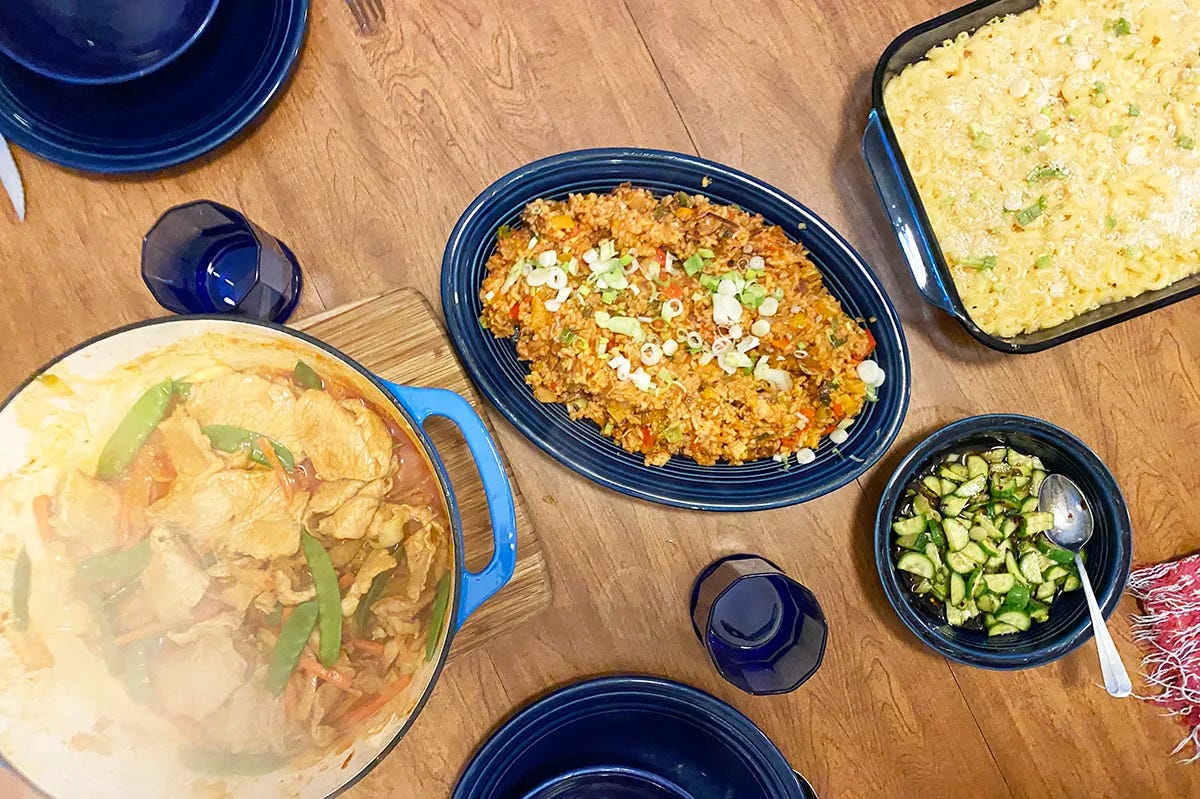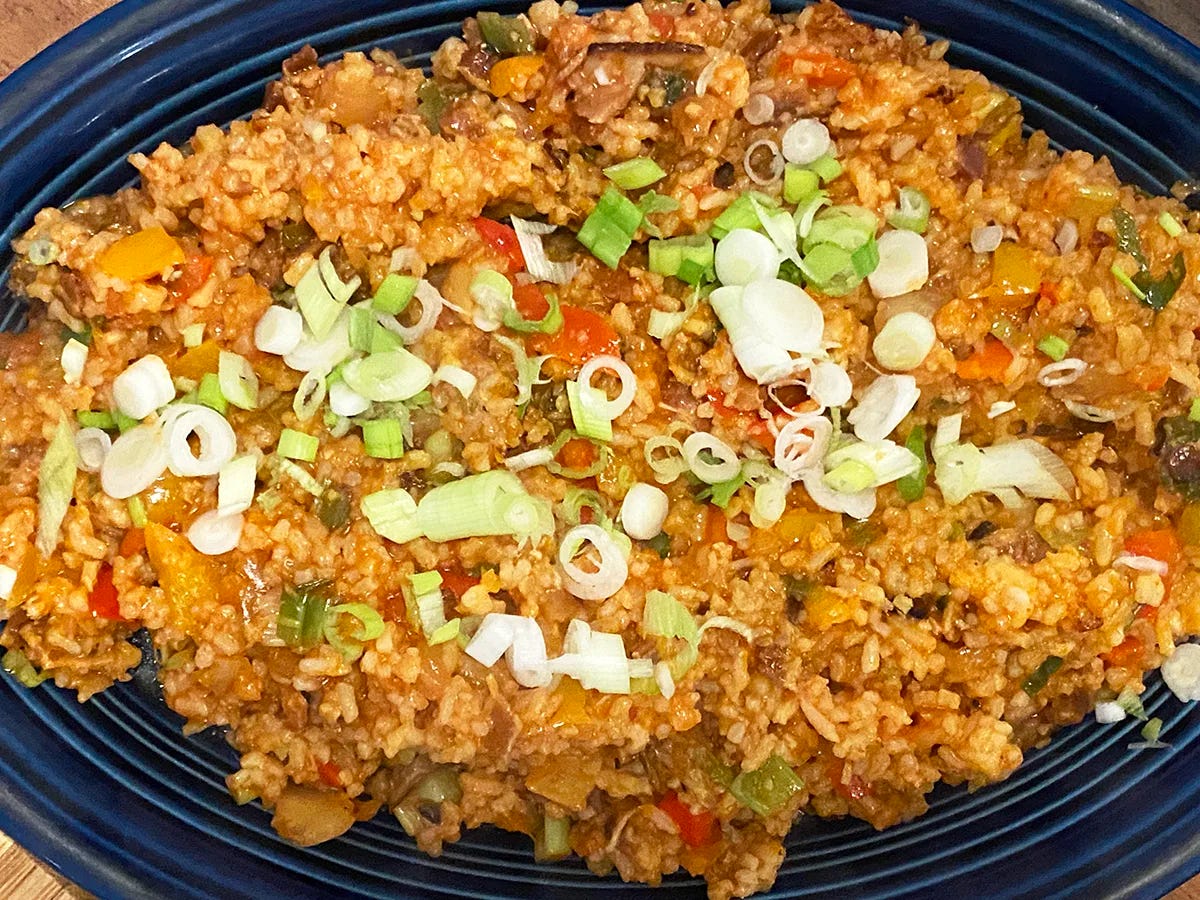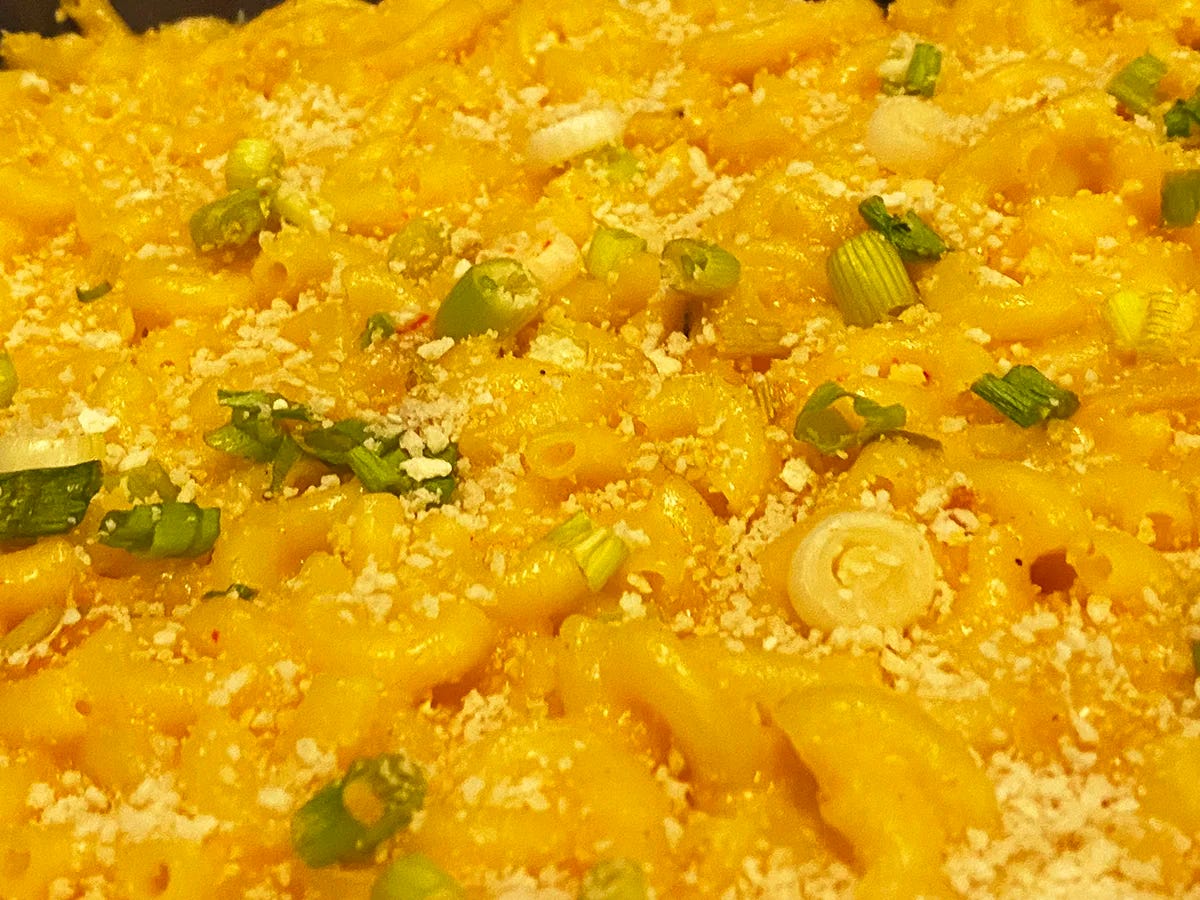Food Notes: 8/5
Gochujang, fried rice, kimchi, Rosner's Rules, purse tuna, and more!
We ran out of Gochujang. It’s not an easy thing to find on Cape Cod where garlic is considered an exotic spice.
Spicy sauces and ingredients are easy to find in Brooklyn, but when I’m headed to my parents’ on the Cape, I always stock up on essentials like Chile Crisp, Melinda’s hot sauce, and Gochujang. We left half tub in the back of the refrigerator last summer and I thought we were good. After cooking with it over the New Year, nobody else had bothered to touch it.
I reached into the back of the refrigerator a few weeks ago but instead of finding the thick sauce, what remained looked like a red moon surface, desicated and cracked. Turns out Gochujang does expire. But that left us with a problem: where to find some out on Cape Cod.
The Super Stop & Shop where I usually get groceries doesn’t stock it, nor does the hippie-haven, Friends Market, that mother prefers shopping at. The one place I thought for certain might have some, Atlantic Spice, was out of stock. I even looked on the shelves of the Eastham Superette just in case they were going to surprise me.
That’s when I decided it was time to check out Shaw’s. Now owned by Albertson’s, Shaw’s was founded in Portland (the good one) in 1860, and became a long-running New England Grocery chain. The stores are scattered across the Cape, and out here seemingly the main competitor with Stop & Shop. But I’d never been in one.
Stop & Shop has limited its competitors, especially out on the Cape where there is finite space for large format stores. The chain buys up land, adds restrictive covenants preventing other grocery stores from opening, and then sells or otherwise abandons the property. They’ve done this across the Cape, but it’s a lot more of a problem on the outer Cape, where the narrow bar of sand becomes an hour’s drive from the mainland.
On the outer Cape, Stop & Shop has two large format supermarkets — one in Provincetown, which serves just the tip, and then next store is in Orleans. In between there are a handful of small markets like Hatch’s, Wellfleet Marketplace (which I still call Lima’s), the Eastham Superette, and convenience stores like Cumberland Farms. But there’s a shortage of actual grocery stores.
It hasn’t always been this way. I’m old enough to remember, for instance, the old IGA on Route 6. It wasn’t a huge store, but it was a supermarket. It closed decades ago, and has been more or less derelict since (the subdivided space now sports a Dunkin Donuts). In Eastham, Stop & Shop added usage restrictions to an old golf driving range, before selling the land to the city for low income housing (There is now a weekly farmer’s market on the property, which seems like a dare to the Stop & Shop’s legal department). But across the Cape, when big retail spaces are put up for sale, Stop & Shop buys the land and adds restrictions on what can be sold to prevent competition.
Despite all this, I’ve never actually been in the Shaw’s. My father likes shopping there because he can search the app for products and it tells him what aisle to find them in . This seems like it actually takes a lot longer than simply grocery shopping like a normal adult. But it did inspire me to give Shaw’s a search for Gochujang — and sure enough, I found it listed online.
I still haven’t been in Shaws, but my wife stopped in on the way back from picking our kid up from day camp. To celebrate, I decided to use a lot of the spicy sauce and make some Korean-inspired dishes (emphasis on inspired).
As it turns out, we also had a number of leftovers I was trying to use up. First, there was what my mother had called Bacon Rice, a dish of white rice with bacon. I decided to use this as a base for some fried rice. I also had a bowl of Béchamel sauce from having made crepes the day before, so I decided to make Kimchi Mac and Cheese, a dish that’s more common than you might expect in Brooklyn. And finally, I decided to make a spicy pork stir fry imitating the flavors of Jeyuk Bokkeum.
The Rice
I was working with a big pile of pre-cooked rice that had bacon mixed in. I didn’t bother looking at a recipe, and I just kind of made it up as I went. I started out frying some peppers, garlic, scallions, and chopped up kimchi, along with some of the juice from the kimchi jar. With this simmering, I added the rice, and scooped in a tablespoon of Gochujang, a dash of soy sauce, and a dash of sesame oil. I fried it up and garnished with scallions.
The Mac and Cheese
I’ve made Mac and Cheese with Gochujang before, but this time I was adding kimchi too. I was starting out with premade Béchamel sauce to which I add 8 ounces of shredded sharp cheddar and 8 ounces of shredded pepper jack cheese. I had boiled some elbows, reserving a few for our four-year-old who prefers it the Italian way (i.e. butter and parmagiana). Into the cheese sauce I stirred in gochujang and finely diced kimchi, then folded in the cooked pasta. At this point the dish was totally delicious, and I would have been happy eating a bowl of creamy kimchi, gochujang mac and cheese. However, I poured it into a baking pan and topped with bread crumbs, baked it for ten minutes, and then topped with scallions. If anything, the kimchi tempered the spiciness of the gochujang.
The Pork
Here’s where I used a lot of the gochujang. I pulled up a couple of recipes to reference, and then rolled with the vibes. We got a big chunk of pork, and to cut this thing I put it in the freezer for about 20 minutes before slicing it. The extra cold meat actually did help slice thinner pieces. I made a sauce from gochujang, soy sauce, sesame seed oil, sugar, and garlic powder. I fried the sliced meat while prepping carrots, bell peppers, onions, and garlic. I probably had too much meat, and the wrong shaped pot—the frying pan was filled with rice rather than meat. When the meat had browned, I added the vegetables and the sauce. A the last minute I threw in some snow peas. The flavors paired well with the rice and mac and cheese.
Overall, the meal came together quickly — once all the vegetables were chopped.I kept the heat level mild since I knew my parents have a lower tolerance for spice. But a day later, when I reheated some leftovers, everything gained a little bit of heat.
The Latest
Rosner’s Law
Helen Rosner invented a new rule for finishing your dishes: double garnish. In a longer Thread, she explains that home cooks can make their serving dishes look more professional by saucing under the food, serving in a shallow bowl, and topping with a double garnish, one to brighten and one to deepen the dish. Personally I would have gone with Rosner’s Rules given the alliteration, but perhaps that should simply be the title of a future book, a Robert’s Rules for Food.
America’s Oil Dependency
The United States is dependent on foreign oil — olive oil. About 95% of the 400,000 tons are imported, and just like coffee or avocados, no level of tariffs will move more production domestically. We just can’t grow enough olives. Tariffs are about to disrupt the global olive oil trade, too, since Americans are the second biggest market after Italy. Meanwhile, NPR talks with a Tuscan-based brother and sister team who have been building their super premium olive oil business — and how the market chaos is changing their business plans. TLDR? I hope you like corn oil.
Purse Tuna
The kids are not alright. Gen Z apparently thinks its okay to bring food to restaurants. MacKenzie Chung Fegan at the San Francisco Chronicle looks into the latest food fad— bringing outside food and beverages into a restaurant. The incidents range from sneaking in an entire pizza to the iconic “purse tuna,” which is, as you might imagine, tuna fish in a purse.
Marcella Documentary on PBS
The new documentary about Marcella Hazan is now up on PBS as part of the Masters series. Mahira Rivers reflects on the show over at PBS.org, and of course you can check out my interview with director Peter Miller.
Smash Burgers Meet Thai Cuisine
We had lunch at Zaab Burger, a smash burger offshoot of the popular NYC Mini-Chain Zaab Zaab.
Ancient Mexican Snow Cones
José Ralat looks into nieves de garrafa, a frozen treat made in Mexico from the snows that fall on top of volcano peaks.
Iconic Foods of America
Food & Wine looks into the nation’s iconic regional foods, and where to find the best examples.
Around The Stack
Check out how to make Lorighittas, a Sardinian pasta at Rachel Lerro’s Most Hungry.
Judy Jamieson Pisano, over at A Wine Lover In Italy, highlights some wineries she visited this summer.
This is one of the most stunning photos of tomato varietals on the internet this month.
Pasta Social Club makes a variation on Spaghetti with Aglio e Olio
Brad Thomas Parsons goes in search of Hubig Hand Pies, a delicacy local to New Orleans.





